Archeology is the scientific study of the material remains of past human life and activities. Human artifacts from the very first stone tools to the man-made substance that are buried or thrown away in the present day are also included in the archeology. Everything made by human beings–from simple tools to multipart machines, from the earliest houses and temples and tombs to palaces, cathedrals, pyramids and other archeological investigations are the most important sources of knowledge of prehistoric, ancient and destroyed culture. The word comes from the Greek archaia (“ancient things”) and logos (“theory” or “science”).
Archeologists use the scientific capability of many persons who are not archeologists in their jobs. An archeologist often studies his artifacts that must be studied in their environmental contexts. It is believed that the botanists, zoologists, soil scientists and geologists are brought to identify and explain plants, animals, soils, and rocks. Radioactive Carbon Dating Method, which has revolutionized much of archeological science of determined dates, is a derivative of research in atomic physics. Perhaps it is almost correct to say that the archeologist is first a craftsman, active in many particular crafts (of which mine is the most familiar to the general public) and then a historian.
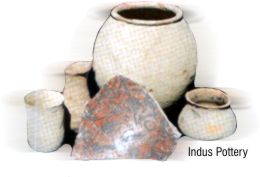
The archeologist is first an expressive worker. He has to describe, categorize and examine the artifacts he studies. A sufficient and objective classification is the beginning of all archaeologies and many good archeologists spend their lives in this activity of explanation and classification. But the main aim of the archaeologist is to situate the material remains in historical contexts to extra what may be known from written sources, and thus, to increase understanding of the past. Finally, the archaeologist is a historian and his aim is to explain description of the past of man.
The main aim is to develop the present by knowledge of the experiences and achievements of our predecessors because it concerns things people have made. The most direct findings of archaeology put up with on the history of art and technology; but by suggestion it also produces information about the society, religion and economy of the people who created the artifacts. Also, it may bring to light and understand previously unknown written documents, providing even more certain confirmation about the past.
There are many branches of archaeology divided by geographical areas like classical archaeology, the archaeology of ancient Greece and Rome or Egyptology, the archaeology of ancient Egypt or by periods like such as medieval archaeology and industrial archaeology. Writing was begun 5,000 years ago in Mesopotamia and Egypt. Its beginnings were fairly later in India and China and later still in Europe. The characteristic of archaeology that deals with the past of man before he learnt to write has since the middle of 19th century has been referred as prehistoric archaeology or prehistory. In prehistory, the archaeologist is principal for here the only sources are material and environmental.
Gujarat & Indus Valley Civilization
Indus Valley Civilization was one of the great civilizations of the world. It is also called ‘Harappan civilization’.
Rangpur is in Limdi Taluka of Ahmedabad district in Gujarat. Rangpur was the first site which was displayed after independence as it was supposed to be a ‘Harappan outpost’. Rangpur was symbolized a delayed chapter of the grown ‘Harappan culture’.
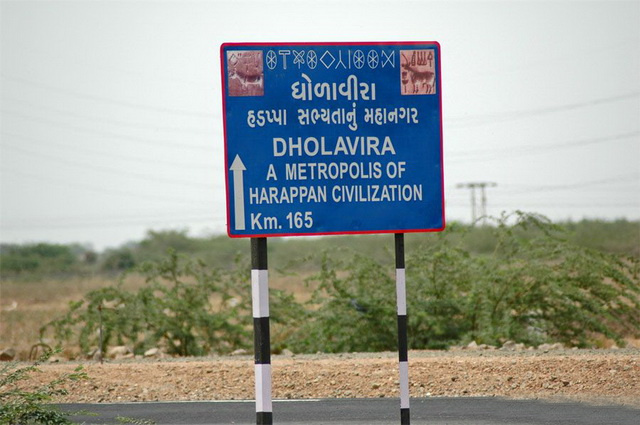
 Additional statements of the peninsulas of Saurashtra and Kutch and large continuous expand of land of Gujarat from 1954 to 1958 brought to streak different phases of ‘Harappan civilization’ and thus, added a new territory to the Indus Empire. The discoveries completed the civilization by 500 kilometers up to the north of the river Kim where another small Harappan part, “Bhagatrav”, gives admission to the streaked bearing mines and forest hills of the Narmada Tapi Valleys.
Additional statements of the peninsulas of Saurashtra and Kutch and large continuous expand of land of Gujarat from 1954 to 1958 brought to streak different phases of ‘Harappan civilization’ and thus, added a new territory to the Indus Empire. The discoveries completed the civilization by 500 kilometers up to the north of the river Kim where another small Harappan part, “Bhagatrav”, gives admission to the streaked bearing mines and forest hills of the Narmada Tapi Valleys.
Around 2500 B.C., the Harappans probably started systematic in Kutch and settled down there with an remarkable speed and strength. Therefore, about 60 Indus settlements have been found in Kutch. Out of them about 40 belong to the ‘early’ phase and the remaining represents the late phase of the mature Harappan culture.
Only five settlements of the ‘early phase’ continue into the ‘late phase’ and the remaining are new settlements of the delayed Harappans.
On the foundation of general confirmation coming to Kutch and parts of Gujarat, it appears that Harappans brought here their full detailed culture and lived almost a full life before their culture decreased and disjointed causing large scale movement from Kutch to the surroundings of Gujarat and perhaps Saurashtra.
Dholavira:
Above all the Harappan sites, the site of Dholavira nearby known as Kotada, in the Khadir island of Kutch stands separately. It is memorable for its wonderful planning and vastness of area and deposit. Currently, we can say that it is one of the two largest arrangements in India and the fourth or fifth largest in the subcontinent. The others arrangements are: Mohenjo-daro, Harappa, Gharo Bhiro (all in Pakistan) and Rakhigarhi (in India).
Dholavira enjoys the exclusive characteristic of elastic a dedication of ten large sized signs of the Harappan script that is indeed the oldest sign-board of the world. A variety of used funerals structures is yet another feature of greater than importance throwing new light on the socio-religious beliefs by this means representative the presence of compound national groups in the Indus population of Dholavira.
Dholavira presents a ‘Harappan city’ similarity excellence, trial about 600 m on the east-west. Inside the general strengthening, there are three separate complexes: An Acropolis, a middle town and a lower town. In addition, the acropolis and the middle town had been further furnished with their own accessory defence-work, gateways, built-up areas, street-system, wells and large open spaces. The city has inside the general building up accounts for 48 hectares. Besides, there are extensive structure-bearing areas while outside yet warmly important to the fortified settlement.
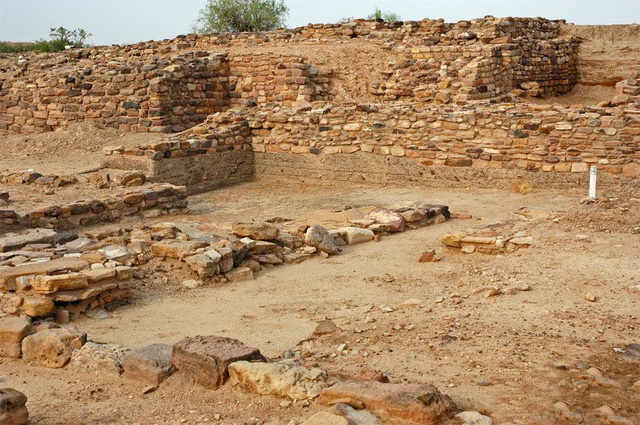 Extensive pre-planning seems to have gone to explain and construction of the ‘ACROPOLIS’. It is the most carefully secured as well as extraordinary and impressive complex in the city of which it devotes the major portion of the south-western zone. The massive ‘castle’ stands royally in fair padding and is marvelously defended by double fortifications. It belongs about 140 m by the side of east-west and 120 m north-south and registers a maximum height of more than 16 meters. Nearly in the centre of each of the eastern, western and northern sides of the double defenses a big gate is provided to give contact to the ‘castle’ through a flight of steps.
Extensive pre-planning seems to have gone to explain and construction of the ‘ACROPOLIS’. It is the most carefully secured as well as extraordinary and impressive complex in the city of which it devotes the major portion of the south-western zone. The massive ‘castle’ stands royally in fair padding and is marvelously defended by double fortifications. It belongs about 140 m by the side of east-west and 120 m north-south and registers a maximum height of more than 16 meters. Nearly in the centre of each of the eastern, western and northern sides of the double defenses a big gate is provided to give contact to the ‘castle’ through a flight of steps.
Middle Town:
The tormented ‘middle town’ admeasures about 350m east-west and 180 to 200m north-south and rises to a height of 8.60 m from the general ground-level. There were two or three more gates in the attachment which facilitated inter communication normally with the ‘lower town’ in the east and the open spaces on other sides.
Lower Town:
The built-up area of the ‘lower town’ engages nearly 2/3 part of eastern half of the prepared city. It procedures 300 m east-west and 350 m. north-south, approximately attaining the height of 7.50 m like the ‘middle town’ this too displays a constructed area having several built-up projections and open recesses at least on the north- east and south where the final combines with the general open area which runs around.
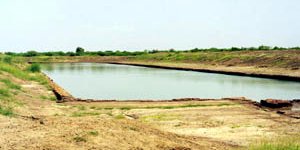 Lothal:
Lothal:
Lothal is the name of an antique load situated in the returns authority of Saragwala village in Dholka Taluka of Ahmedabad District in Gujarat State. The word ‘Lothal’ means ‘place of the dead’. In Gujarati language, it is said that ‘Lothal’ has been produced by combining the words Loth and thal (sthal).
Lothal is fundamentally a single background site. The Harappan culture in all its alternative forms is well represented here.
The Harappans were attracted to Lothal not only by its protected harbors with a rich cotton-and rice-growing surroundings but also by its drop of liquid industry.
The Indus ambivalence of dividing the city into a fortress or Acropolis and a Lower Town was followed in planning Lothal. The ruler and his followers lived in the acropolis where houses were built on 3 m high platforms and provided with all the public facilities including covered baths, underground drains and a well for drinkable water.
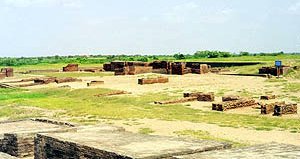 The Lower-Town which also enjoyed municipal services was subdivided into two sectors. The north-south major street sided of a mountain by shops was the main commercial centre in which the rich merchant and ordinary craftsmen lived together. The populated sector set to the east and west of bazaar.
The Lower-Town which also enjoyed municipal services was subdivided into two sectors. The north-south major street sided of a mountain by shops was the main commercial centre in which the rich merchant and ordinary craftsmen lived together. The populated sector set to the east and west of bazaar.
While planning the town, Lothal engineers voluntarily accorded high precedence to two other needs. The accomplishment was determined by the economic success of the residents. The first one was a waterfront for providing a sleeping place for ships and the second a storehouse for storing and examining goods. The port built on the eastern border of the town is an engineering accomplishment of the highest order. Its very location away from the main current avoided harbors but at the same time ships could have entrance to the dock in high floodlight.
The second need, namely the warehouse, arose from the large volume of goods which Lothal had to hold. Therefore, a warehouse was built close to the acropolis on a 3.5 m high platform of mud-bricks to serve as a clearing house for incoming and outgoing cargo.
With the birth of a planned Harappan port-town in Phase II (2350 BC) Lothal enjoyed great richness yet to be paid to foreign trade. It became a busy manufacturing centre importing pure copper and producing bronze Celts, fish-hooks, chisels, spearheads and ornaments which were supplied through normal trade channels all over the western county and beyond.
Surkotada:
Around 2300 BC, the Harappans came to Surkotada and built a fortified fortress and residential take over, made of dirt brick, mud lumps and wreckage containing houses with bathrooms and drains. They had painted ceramic objects with Indus alphabet painted on the pots, cherty blades and copper objects, a typical Harappa close up has also been found. Other interesting finds are clay lingo like objects obviously of alternative importance. A piece of overdone rope adds to the variety of the finds. Bones of the Equus from the earliest levels are other important discovery in that they show the animal was known to the Harappans. Some important finds are a typical Harappan terracotta seal, a heavy copper chisel, a hoard of copper beads and bangles and terracotta toys, tanks and beads besides animal skeletal remains of the horse, camel, elephant and sheep.
The Harappans buried the bones of their dead in small oval depths and put jars and dishes on a stand probably for keeping food etc. and covered it with a huge block. This practice is extraordinary in the Harappan funeral tradition.
The excavations have discovered that the Harappans lived here along with a forerunner culture with all their typical modes of environment and cultural assembly and continued even after the established phase was over.

Leave a Reply